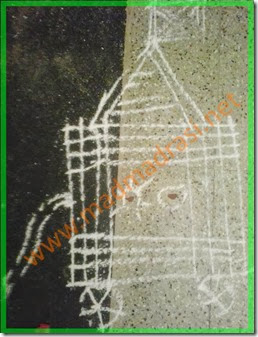Tomorrow, 07th February 2014, is the eighth day of the waxing moon in the Tamil month of Thai ( ) or the Hindi month of Magh, and is the day of Bhishma Ashtami. Occurring the day after Ratha Saptami, the eighth day is believed to be the day when the grand old man of the Mahabharat epic - Bhishma - died.
Bhishma, which in Sanskrit literally means ‘Who undertook a Terrible Oath’, was the 8th son of Kuru King Shantanu. The terrible oath of Bhisma was a vow of celibacy, and servitude to the Kuru Throne, so that the kingdom can be bestowed on his half-brother.
In defence of the Kuru Throne, he commanded the armies of his grand-nephews - the Kauravas, against the other grand-nephews - the Pandavas, in the Kurukshetra war. He fell on the 10th day of the war, his body pierced with so many arrows, that it appeared as if he is lying on a bed of arrows.
With his boon of ‘death only per wish’, and his vow to safeguard the Kuru throne, Bhishma with extraordinary mental strength stayed alive for 58 days or 50 days after the end of war, to die only when the Sun God began his annual northward movement.
One day after Ratha Saptami, he breathed his last. As Bhishma is without descendants and as a mark of respect to his devotion, loyalty, courage and sacrifice, water offering is practiced on the day of Bhishma Ashtami.
The water is offered thrice with the recital of the following mantra, in English script below. As has become the practice, the download link for mantra in Tamil is (and Devanagari scripts are) after the image.
Sankalpam: Bhishma-ashtami punyakaale bhisma tharpanam karishye
1st Argyam: Bhishmaha shanthanavo veeraha sathyavadhi jithendriyaha |
Aabhi radhbhi-ravaapnotu putra-pouthro-chitam kriyam ||
Bhishmaaya namaha idhamargyam ||
2nd Argyam: Vaiyagrapaadha gothraaya saangkrutya paravaraaya cha |
Gangaputraya bhishmaya aajanma brahmachariNe ||
Bhishmaaya namaha idhamargyam ||
3rd Argyam: Gangaputraaya shaantaaya shantanoha aatmajaaya cha |
Aputraaya dhadhaamargyam salilam bhishma-varmaNe ||
Bhishmaaya namaha idhamargyam ||
Prarthana: Anena argya pradhanena Bhishmaha preeyatam ||

(image: a kolam picturing the chariot of the Sun God)
An edited version of this article appears in the Speaking Tree blog of the Times of India.
Bhishma, which in Sanskrit literally means ‘Who undertook a Terrible Oath’, was the 8th son of Kuru King Shantanu. The terrible oath of Bhisma was a vow of celibacy, and servitude to the Kuru Throne, so that the kingdom can be bestowed on his half-brother.
In defence of the Kuru Throne, he commanded the armies of his grand-nephews - the Kauravas, against the other grand-nephews - the Pandavas, in the Kurukshetra war. He fell on the 10th day of the war, his body pierced with so many arrows, that it appeared as if he is lying on a bed of arrows.
With his boon of ‘death only per wish’, and his vow to safeguard the Kuru throne, Bhishma with extraordinary mental strength stayed alive for 58 days or 50 days after the end of war, to die only when the Sun God began his annual northward movement.
One day after Ratha Saptami, he breathed his last. As Bhishma is without descendants and as a mark of respect to his devotion, loyalty, courage and sacrifice, water offering is practiced on the day of Bhishma Ashtami.
The water is offered thrice with the recital of the following mantra, in English script below. As has become the practice, the download link for mantra in Tamil is (
Sankalpam: Bhishma-ashtami punyakaale bhisma tharpanam karishye
1st Argyam: Bhishmaha shanthanavo veeraha sathyavadhi jithendriyaha |
Aabhi radhbhi-ravaapnotu putra-pouthro-chitam kriyam ||
Bhishmaaya namaha idhamargyam ||
2nd Argyam: Vaiyagrapaadha gothraaya saangkrutya paravaraaya cha |
Gangaputraya bhishmaya aajanma brahmachariNe ||
Bhishmaaya namaha idhamargyam ||
3rd Argyam: Gangaputraaya shaantaaya shantanoha aatmajaaya cha |
Aputraaya dhadhaamargyam salilam bhishma-varmaNe ||
Bhishmaaya namaha idhamargyam ||
Prarthana: Anena argya pradhanena Bhishmaha preeyatam ||

(image: a kolam picturing the chariot of the Sun God)
An edited version of this article appears in the Speaking Tree blog of the Times of India.
No comments:
Post a Comment